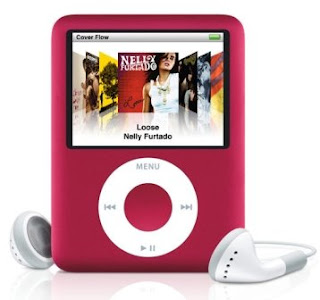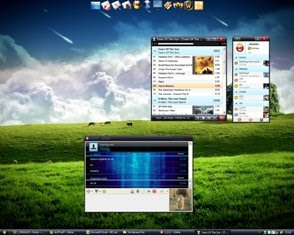 OK, say you've got one thousand of your favorite MP3 songs sitting in your hard disk. What's the best way to enjoy those files? Most of us probably will use the Windows Media Player to listen to those files. but did you know there are other more innovative and interesting ways playback MP3, WMA and WAV files?
OK, say you've got one thousand of your favorite MP3 songs sitting in your hard disk. What's the best way to enjoy those files? Most of us probably will use the Windows Media Player to listen to those files. but did you know there are other more innovative and interesting ways playback MP3, WMA and WAV files?
Let's take a look at the five methods.
Use MusicMatch Jukebox
If you think most that most PC programs for playing digital music look like the built-in Windows Media Player, think again. There are programs out there that go far beyond the Windows Media Player in functionality. One great example is Musicmatch Jukebox from Musicmatch. Musicmatch Jukebox is quite simply the world's best digital music player. It supports playback of various music formats like audio CDs, MP3s, Internet streams, WMAs, WAV files and more. You also get CD burning, music ripping and music organizing capabilities. The Plus version even allows you to automatically tag your music files with detailed info and album art!
Use a Portable MP3 Player
Portable music players like the Apple iPod, Creative Nomad and Rio Nitrus have taken the market by storm. You don't have to be confined to your desktop PC or laptop to listen to digital music! The portable music players can allow you to take your music anywhere. The compact size of MP3 and WMA music formats means that you can literally take a jukebox of thousands of songs whereever you go! You may also want to check out my review of the top 5 portable music players here. There are also other portable music options, including handphones with MP3 support.
Use a PDA
The latest Pocket PC or Palm-based personal digital assistants (PDAs) can also act as music players. Pop in a large memory card (e.g. 64 MB) and you can store many MP3 or WMA files. Then hook up a headphone, launch the music software in the PDA and you're good to go! I personally own a HP iPaq 2210 which effectively keeps track of my appointments and doubles up as a music player.
Use Your Car Stereo
This is my favorite way of listening to my MP3 collection. I recently bought a car stereo that can playback native MP3 songs. This means that I can pop in a data CD containing hundreds of MP3 files and the car stereo will play them! This does not work on conventional car stereos. If you own a conventional car stereo, but still want to listen to your MP3 songs, one way is to create an audio CD from your music files first. The car stereo will then have no problem interpreting and playing back the audio CD. Of course, in this case, you'll be limited to about 14 to 17 tracks of music only.
Use Your Home Stereo
If you're a music lover, you probably already have a home stereo. Use it to listen to your MP3 music files! However, take note that Like car stereos, conventional home stereos will not be able to play back native MP3 songs. You will need a newer home stereo set with MP3 playback capability. New models from Kenwood, Panasonic, Pioneer and Sony usually have MP3 support.
Conclusion
As you can see, there are many ways to enjoy that digital music collection of yours. My favorite methods of listening to digital audio files is via a portable music player or the car stereo. Of course, you may have your own preference - some people like to listen to music off their desktop PC or laptop. Decide which method(s) is suitable for you and go for it!
Gary Hendricks - http://digital-music-guide.com












